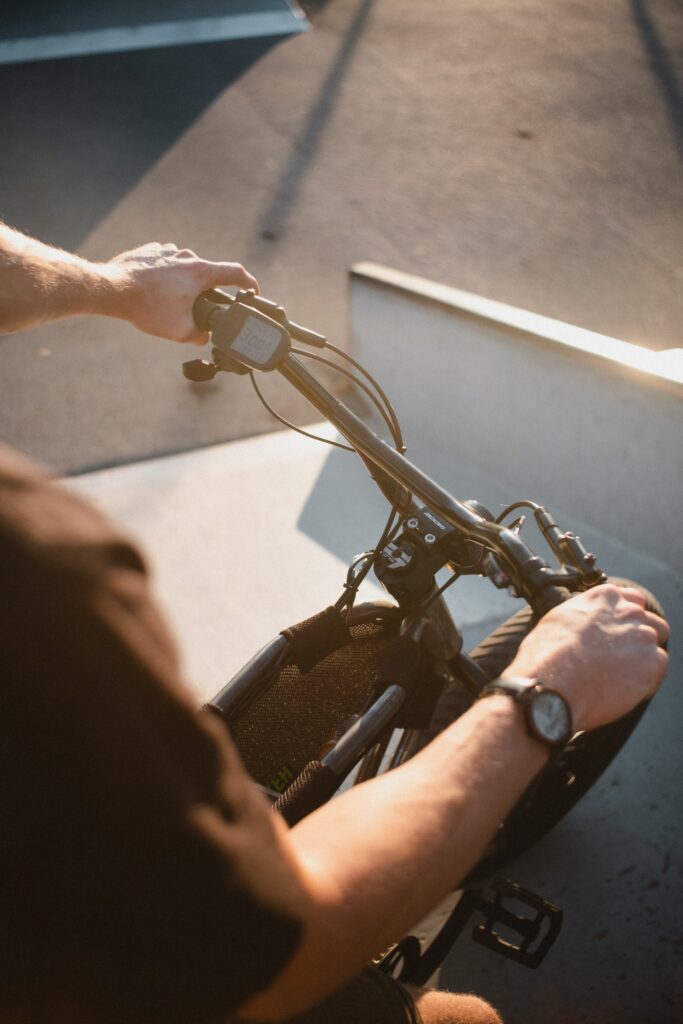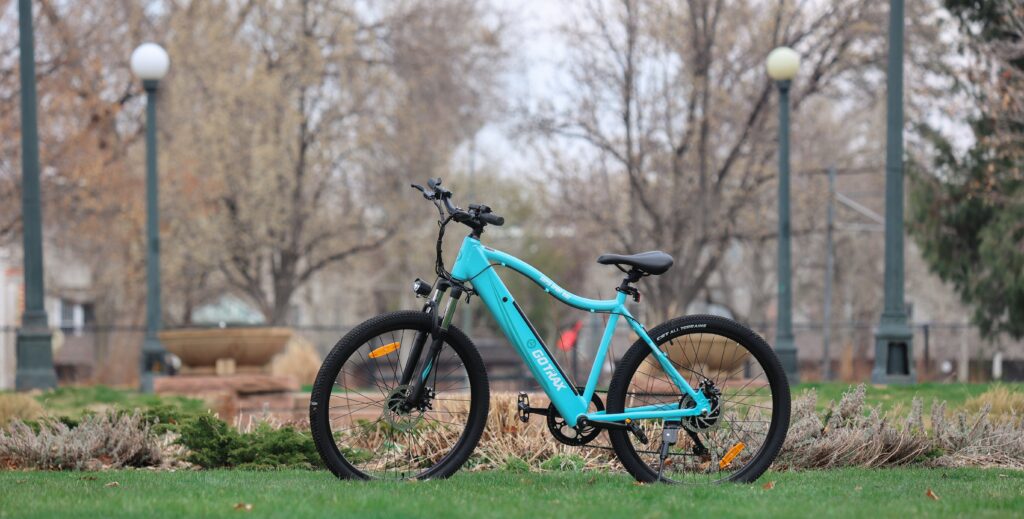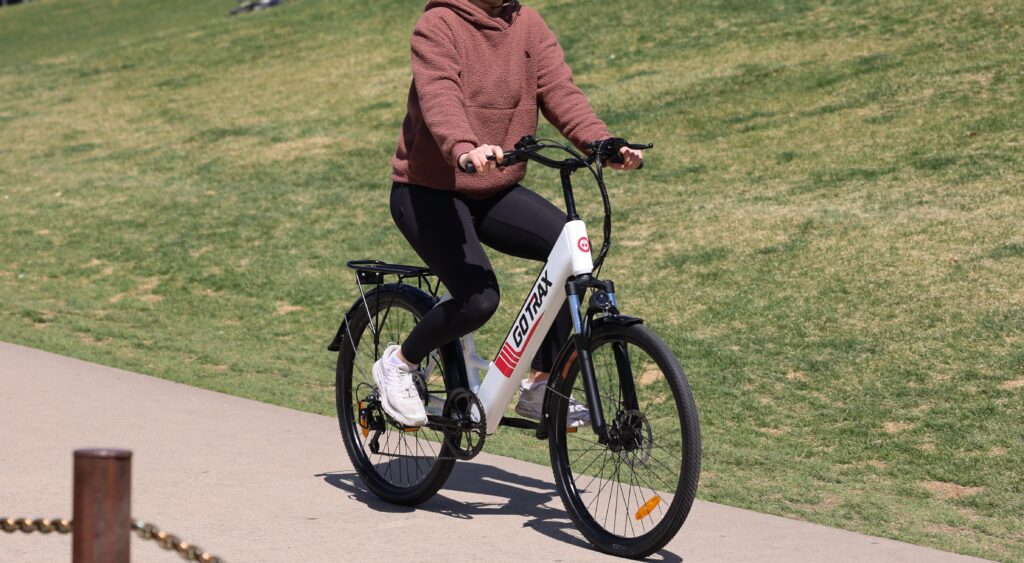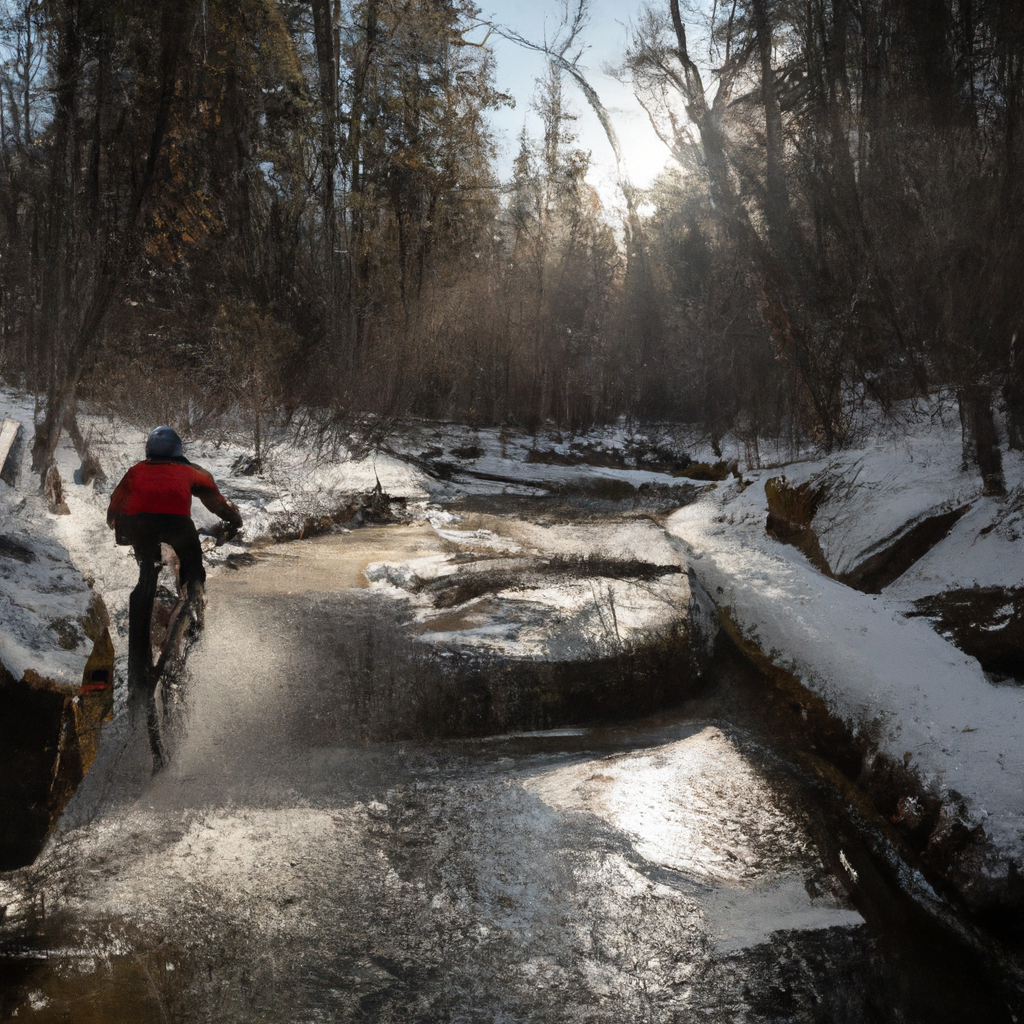Ready to hit the road on your new e-bike but unsure how different weather conditions may affect your ride? Look no further than this beginner’s guide to riding your e-bike in various weather conditions. From sunny skies to rain showers, we’ll provide you with essential tips and tricks to keep you safe and confident on your electric bike. Whether you’re an urban rider or prefer off-road adventures, this guide will equip you with the knowledge you need to navigate any weather condition with ease. So, get ready to embrace the elements and embark on your e-bike journey, rain or shine!
Riding Your E-Bike in Different Weather Conditions: A Beginner’s Guide
As an e-bike rider, you have the advantage of being able to enjoy your ride in various weather conditions. However, it’s important to prepare and take precautions before heading out in different weather elements. Whether it’s rain, snow, extreme heat, cold weather, windy conditions, fog, hazy or smoky conditions, thunderstorms, strong sunlight, or changing weather conditions, each weather condition brings its own challenges and considerations.
1. Riding in Rain
1.1. Preparing Your E-Bike
Before riding your e-bike in the rain, it’s important to ensure that your bike is ready for the wet conditions. Start by checking your tire pressure and making sure it’s properly inflated. Wet surfaces can be slippery, so having good traction is essential. Consider investing in tires with deeper tread patterns or ones specifically designed for wet conditions.
Next, check your brakes to ensure they are in good working condition. Wet brakes may not be as responsive, so it’s crucial to have them properly adjusted and ensure that your brake pads are not worn out.
Additionally, make sure your e-bike’s electrical components are well protected. If your e-bike has exposed wires or connections, consider covering them with waterproof tape or using a waterproof housing for the electric motor.
1.2. Tips for Riding Safely
When riding in the rain, safety should be your top priority. Start by wearing appropriate protective gear, such as a waterproof jacket, pants, and gloves. Visibility can be reduced in rainy conditions, so wear bright or reflective clothing to make yourself more visible to other road users.
Keep a safe distance from other vehicles and anticipate longer stopping distances due to wet roads. Slow down and avoid sudden movements to maintain better control of your e-bike. Be aware that painted road markings and metal surfaces can be particularly slippery in the rain.
Using your e-bike’s lights and reflectors is also crucial when riding in rainy conditions. Ensure that your lights are turned on and working properly to improve your visibility to others. In case of heavy rain, consider using additional lighting options, such as clip-on lights or reflective tape.
1.3. Maintaining Your E-Bike After Riding in the Rain
After riding your e-bike in the rain, it’s important to give it proper maintenance to prevent rust and ensure its longevity. Start by drying off your bike using a soft cloth or towel. Pay special attention to the drivetrain, chain, and brakes.
Inspect your chain for any signs of rust or corrosion. Wipe it down and apply a lubricant specifically designed for wet conditions. This will help protect your chain and ensure smooth operation during future rides.
Check your brake pads for any debris or water buildup. If needed, towel dry or use compressed air to remove any moisture. This will help maintain their effectiveness for your next ride.
Finally, store your e-bike in a dry and protected area to prevent further exposure to moisture. Clean any mud or dirt from the tires and frame to keep your e-bike in top shape.
2. Riding in Snow
2.1. Choosing the Right Tires
When it comes to riding in snowy conditions, having the right tires is crucial. Look for tires with deep treads to provide better traction on the snow. Wide and knobby tires are especially effective in maintaining stability on slippery surfaces. Consider investing in studded tires for added grip on icy roads.
2.2. Controlling Your E-Bike
When riding in snowy conditions, it’s important to adapt your riding style to maintain control. Start by riding at a slower pace to prevent skidding or spinning out. Gradual and smooth movements are key to keeping your e-bike stable on snowy and icy surfaces.
Maintain a safe distance from other vehicles and be aware of your surroundings. Cars and pedestrians may have reduced visibility in snowy conditions, so use your lights and make yourself visible.
Finally, be cautious when braking or accelerating. Apply gentle pressure to your brakes to prevent locking up the wheels. Gradually accelerate to avoid spinning.
2.3. Extra Precautions for Safety
Winter weather can bring additional hazards, such as reduced visibility and slippery surfaces. It’s important to take extra precautions for your safety and the safety of others.
Wear warm and waterproof clothing to protect yourself from the cold and wet conditions. Layer your clothing to regulate your body temperature and choose materials that wick away moisture to keep you dry.
Consider attaching fenders to your e-bike to prevent snow or slush from splashing onto you. This can help keep you dry throughout your ride.
Be aware of black ice, which can be particularly treacherous. Look for signs of shiny, smooth, and dark patches on the road. Reduce your speed and avoid sharp turns or sudden movements when encountering black ice.

3. Riding in Extreme Heat
3.1. Staying Hydrated
When riding in extreme heat, it’s crucial to stay hydrated to prevent heat exhaustion or heatstroke. Start by drinking plenty of water before you start your ride. Carry a water bottle or hydration pack with you to ensure you can drink regularly during your ride. Aim to drink at least 8 ounces of water every 15-20 minutes to stay properly hydrated.
3.2. Protecting Yourself from Sunburn
In extreme heat, the sun’s rays can be harsh on your skin. To protect yourself from sunburn, apply a broad-spectrum sunscreen with a high SPF before your ride. Wear lightweight and breathable clothing that covers your skin to minimize sun exposure. Consider wearing a wide-brimmed hat or a cycling cap to shield your face and keep the sun off your head.
3.3. Dealing with Battery Heat
Extreme heat can also affect your e-bike’s battery performance. To optimize battery life and efficiency, avoid exposing your e-bike to direct sunlight for extended periods. If possible, find a shaded area to park your e-bike when taking breaks or at your final destination.
If your e-bike has a removable battery, consider removing it and keeping it in a cool place while you’re not riding. This can help prevent overheating and prolong its lifespan.
4. Riding in Cold Weather
4.1. Dressing Properly
When riding in cold weather, it’s important to dress appropriately to stay warm and comfortable. Layering is key to regulate your body temperature. Start with a moisture-wicking base layer to keep perspiration away from your skin. Add a thermal or insulating layer for warmth, and top it off with a windproof and waterproof outer layer to protect you from the elements.
Don’t forget to wear gloves, a hat, and warm socks to keep your extremities cozy. Consider using shoe covers or winter cycling shoes to protect your feet from the cold.
4.2. Tips for Battery Performance
Cold weather can have an impact on your e-bike’s battery performance. To maximize battery life, store it in a warm place, and attach it to your e-bike just before you start your ride. If possible, keep your e-bike indoors to prevent the battery from getting too cold.
During the ride, keep an eye on the battery level indicator. Cold weather can drain the battery faster, so plan your route accordingly and be prepared for a shorter range. Carry a backup battery or a charger with you if needed.
4.3. Be Cautious of Icy Surfaces
When riding in cold weather, be cautious of icy surfaces. Black ice, in particular, can be difficult to spot and can cause a loss of traction. Reduce your speed and avoid sudden movements or sharp turns. Keep a safe distance from other vehicles and be aware of changing road conditions.

5. Riding in Windy Conditions
5.1. Pay Attention to Wind Direction
When riding in windy conditions, it’s important to pay attention to the direction of the wind. Strong headwinds can make your ride more challenging, while tailwinds can provide a helpful boost. Adjust your riding style by leaning forward and tucking in to reduce wind resistance when facing headwinds.
5.2. Riding with Crosswinds
Crosswinds can be particularly tricky to navigate. To maintain stability, hold onto your handlebars firmly with both hands. Shift your weight slightly towards the side from which the wind is blowing to counterbalance its force. Be cautious of gusty conditions that can suddenly change the wind direction.
5.3. Being Aware of Gusts
Gusty winds can catch you off guard and affect your control. Be aware of sudden gusts and brace yourself by keeping a firm grip on the handlebars. Reduce your speed when riding in gusty conditions to maintain stability. Always be prepared for unexpected changes in wind speed and direction.
6. Riding in Fog
6.1. Using Proper Lighting
When riding in foggy conditions, visibility can be greatly reduced. Ensure that your e-bike has adequate lighting to make yourself visible to others. Use your front and rear lights, as well as reflective gear, to increase your visibility in foggy conditions. Consider using fog lights or additional lighting options to illuminate the road ahead.
6.2. Keeping a Safe Distance
In foggy conditions, it’s crucial to keep a safe distance from other road users. Reduced visibility can make it challenging to accurately gauge distances. Maintain a larger buffer zone between your e-bike and other vehicles to allow for more reaction time and prevent accidents.
6.3. Being Extra Cautious
Foggy conditions can make obstacles and road hazards less visible. Slow down and be prepared for sudden surprises, such as potholes or debris on the road. Stay focused and avoid distractions to ensure you can react quickly to any unforeseen circumstances.

7. Riding in Hazy or Smoky Conditions
7.1. Protecting Your Health
Hazy or smoky conditions can have negative impacts on your health. If the air quality is compromised, consider postponing your ride or choosing an indoor exercise option. If you decide to ride, wear a mask or a bandana to filter out particles and reduce your exposure.
7.2. Navigating with Reduced Visibility
In hazy or smoky conditions, visibility can be significantly reduced. Use caution when riding in these conditions and be aware of other road users. Slow down and keep a safe distance from vehicles ahead of you. Be prepared for sudden changes in visibility and adjust your speed accordingly.
7.3. Adjusting Your Riding Style
Hazy or smoky conditions can affect your breathing and endurance. Pace yourself and listen to your body. Take breaks if needed and avoid overexertion. Ride at a comfortable pace and focus on maintaining your respiratory health while navigating through these conditions.
8. Riding in Thunderstorms
8.1. Seek Shelter and Wait
Thunderstorms can bring heavy rain, strong winds, and potentially dangerous lightning. If a thunderstorm is approaching, seek shelter in a sturdy building or a designated safe area. Avoid open spaces, tall objects, and bodies of water until the storm passes.
8.2. Avoid Water and Metal
During a thunderstorm, it’s important to avoid water and metal objects, as they can conduct electricity. If you’re caught in the rain, dismount from your e-bike and find a safe, covered area to take shelter. Avoid touching metal surfaces, such as railings or fences, as they can carry electrical charges.
8.3. Be Aware of Lightning Risk
Lightning poses a significant risk during thunderstorms. If you can’t find shelter, avoid riding uphill, as lightning tends to strike at higher elevations. Keep a safe distance from tall objects, such as trees or poles, and do not seek shelter under them. Wait for the storm to pass completely before continuing your ride.

9. Riding in Strong Sunlight
9.1. Wearing Sun Protection
When riding in strong sunlight, protecting your skin is essential. Apply a broad-spectrum sunscreen with a high SPF before heading out. Wear lightweight and breathable clothing that covers your skin to minimize sun exposure. Consider wearing a wide-brimmed hat or a cycling cap to shield your face from direct sunlight.
9.2. Managing Glare
Strong sunlight can cause glare, making it difficult to see clearly. Wear sunglasses with polarized lenses to reduce glare and improve visibility. Look for sunglasses specifically designed for outdoor activities to provide maximum protection against harmful UV rays.
9.3. Choosing Shaded Routes
Consider choosing shaded routes when riding in strong sunlight. Look for tree-lined roads or areas with buildings that provide natural shade. This can help reduce your exposure to direct sunlight and keep you cooler during your ride.
10. Riding in Changing Weather Conditions
10.1. Monitoring Weather Forecasts
When riding in changing weather conditions, it’s important to stay informed about the weather forecast. Check the forecast before your ride and monitor it throughout the day. Be prepared for changes in temperature, precipitation, or wind conditions and plan your ride accordingly.
10.2. Being Prepared with Gear
To navigate changing weather conditions, be prepared with appropriate gear. Dress in layers to accommodate temperature changes. Carry a waterproof jacket or poncho in case of unexpected rain. Consider packing a small towel or cloth to wipe off any excess moisture from your e-bike or yourself.
10.3. Adjusting Riding Plans
If the weather conditions deteriorate during your ride, be flexible and adjust your plans accordingly. Seek shelter if necessary or consider altering your route to avoid hazardous conditions. Safety should always be your top priority, so don’t hesitate to change your plans or cut your ride short if the weather becomes unsafe.
Riding your e-bike in different weather conditions can provide unique experiences and challenges. By preparing, riding safely, and adjusting your riding style according to the weather, you can fully enjoy your e-bike adventures regardless of the elements. Remember to always prioritize your safety and make informed decisions based on the specific weather conditions you encounter. Stay prepared, stay vigilant, and have fun exploring the world on your e-bike!




